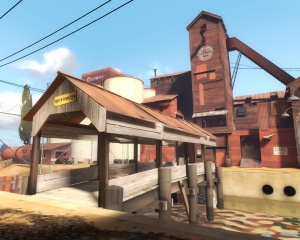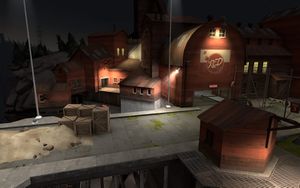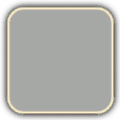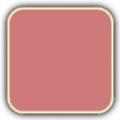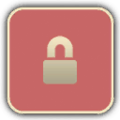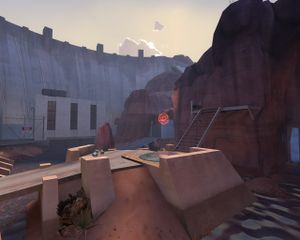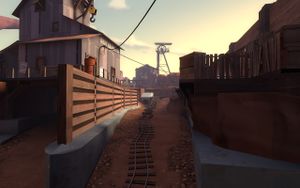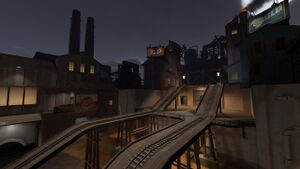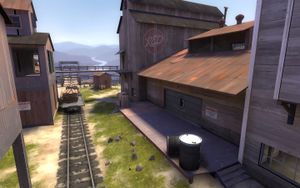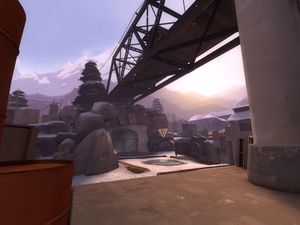Spielmodi
| „Du bist so klein, dass es schon lustig ist!“ Dieser Artikel ist ein sogenannter Stub. Er ist daher nicht vollständig. Du kannst das Team Fortress Wiki unterstützen indem du ihn erweiterst. |
| Diese Seite wird zurzeit auf Deutsch übersetzt. Wenn du Deutsch sprichst, poste bitte auf die Diskussionsseite oder sprich mit denen, die zu dieser Seite beigetragen haben (zu finden in der Versionsgeschichte). |
Team Fortress 2 hat momentan sieben Spielmodi. Ursprünglich wurden mit dem Spiel nur 3 ausgeliefert; jedoch wurden 4 weitere neue Spielmodi durch zahlreiche Updates hinzugefügt, darunter Frachtbeförderung, Arena und King of the Hill. Diese Spielmodi sind über den 39 offizielen Maps verteilt und bieten große Abwechslung im Spielstil in Team Fortress 2.
Inhaltsverzeichnis
Flagge erobern
| “ | Verabschiede dich von deinem Geheimscheiß, Vollpast!
Anhören
— Der Scout
|
” |
Flagge erobern ist ein Spielmodus mit dem roten und blauen Team, indem sich alles um einen Koffer mit Geheimmaterial (bekannt als Flagge) dreht. Das Ziel beider Teams ist das gegnerische Geheimmaterial so oft zu erobern, bis das Eroberungslimit erreicht wurde (standardmäßig 3), während sie ihr eigenes verteidigen, um den Gegner davon abzuhalten selbiges zu tun.
Das Geheimmaterial beider Teams ist oft tief in ihrer Basis versteckt, meist in symmetrischer Lage zum Gegnerischen, in einem Gebiet bekannt als 'Geheimmaterialsraum'. Um das Geheimmaterial aufzunehmen, muss der Spieler Selbiges berühren. Während er das gegnerische Geheimmaterial trägt, muss er es zu dem Ort bringen, wo standardmäßig das Eigene gelagert wird und die 'Eroberungszone' betreten (mit gelben und schwarzen Streifen markiert) um es erfolgreich zu erobern. Nach einer erfolgreichen Eroberung teilt das Team des Eroberers 10 Sekunden kritischen Schaden aus.
Wenn der Geheimmaterialträger getötet wird oder das Geheimmaterial mit Absicht fallengelassem wurde, wird es für 60 Sekunden an einer Stelle stehen, wobei ein Timer anzeigt, wielange es noch herumliegt bis es automatisch in den gegnerischen Geheimmaterialraum zurückteleportiert wird. Während dieser Zeit können Spieler über das Geheimmaterial laufen und es damit aufsammeln, genauso wie im Geheimmaterialraum. Jedes mal, wenn das Geheimmaterial fallengelassen wird, wird der Timer neugestartet. Der Feind kann weder das eigene Geheimmaterial aufnehmen, noch es zurückbringen. Das Geheimmaterial kann nicht von unbesiegbaren Spielern getragen werden (Bsp.: überladene Spieler, Scouts unter dem Effekt des Bonk! Energydrink) und Geheimmaterialträger können keinen Unbesiegbarkeitsbuff erhalten.
Wenn der Träger des Geheimmaterials an einem normalerweise unerreichbaren Ort des Schlachtfelds stirbt (z.B. in eine Grube fällt) wird das Geheimmaterial sofort in den Geheimmaterialraum teleportiert. Wenn kein Team das Eroberungslimit erreicht bevor die Zeit ausgeht, wird der "Sudden Death"-Modus aktiviert.
Anders als in vielen anderen Spielen mit diesem Modus, kann das Geheimmaterial auch erobert werden, falls das Eigene gestohlen wurde.
Flagge erobern-Schlachtfelder:
Kontrollpunkte
| “ | Der erobert sich nicht von selbst! Hier rüber!
Anhören
— Der Engineer
|
” |
Siehe auch: Kontrollpunkte
Control point maps have two main types of game modes.
Kontrollpunkte sind runde Plattformen mit einem teamfarbenen Licht in der Mitte (neutrale Punkte leuchten weiß). Um einen Punkt des gegnerischen Teams zu erobern muss der Spieler so lange auf dem Kontrollpunkt stehen bis die Eroberungsleiste die Farbe seines Teams angenommen hat. Je mehr Spieler eines Teams an einem Punkt stehen, desto schneller wird dieser erobert, aber nur bis zu einem gewissen Ausmaß. Scouts und Spieler die den Pain Train tragen zählen doppelt. Eine Eroberung ist nicht möglich, wenn Spieler beider Teams an einem Punkt stehen. Wenn alle erobernde Spieler getötet oder vertrieben werden beovor der Punkt erobert wurde, wird die Eroberung nicht sofort rückgängig gemacht, aber der Fortschritt wird langsam minimiert.
Kontrollpunkte können 3 verschieden Zustände besitzen:
Es gibt 2 Haupttypen von Kontrollpunkt-Schlachtfeldern: Standard Kontrollpunkte und Angriff/Verteidigung-Schlachtfelder:
Standard Kontrollpunkte
Standard Kontrollpunkt (oder lineare Kontrollpunkte) spielen meist auf symmetrischen Schlachtfeldern. Beide Teams starten mit einer gleichen Anzahl aus 2 eroberten Punkten und einem neutralen Punkt in der Mitte. Das Team, welches allle Punkte erobert, gewinnt. Traditionelle Schlachtfelder wechseln in den "Sudden Death"-Modus (oder Unentschieden, wenn kein Team alle Punkte vor Ablauf der Zeit besitzt. Kontrollpunkte, die in der Nähe der Spawnräume stehen können vom gegnerischen Team schneller erobert werden.
Standard Kontrollpunkte-Schlachtfelder:
Angriff/Verteidigung
Angriff/Verteidigung-Schlachtfelder sind meist asymmetrisch. Das rote Team besitzt bereits alle Kontrollpunkte. Blau gewinnt, wenn sie alle Punkte erobern. Punkte dürfen nur in einer bestimmten Reihenfolge erobert werden (obwohl Schlachtfelder wie Gravel Pit und Steel dabei Ausnahmen machen). Rot gewinnt, wenn sie Blau lange genug vom Erobern ihrer Kontrollpunkte abgehalten haben und die Zeit abgelaufen ist. Die vom blauen Team eroberten Punkte werden gesperrt und können nicht erobert werden.
Angriff/Verteidigung-Schlachtfelder gibt es in verschiedenen Formen. Manche, so wie Dustbowl und Egypt verlangen von Team Blau, den Angreifern, mehrere Bereiche zu absolvieren, bevor sie das Spiel gewinnen können. Wenn das angreifende Team es nicht schafft, jeden Bereich zu erobern, werden die Teams gewechselt und die Verteidiger werden zu den Angreifern. Andere Schlachtfelder wie Gravel Pit oder Junction erlauben den Angreifern 2 Punkte in gewünschter Reihenfolge zu erobern (Punkte A oder B), bevor sie den letzten Punkt erobern (Punkt C). Steel ist ein einzigartiges Schlachtfeld, auf dem es möglich ist durch das Erobern von A,B,C und D Vorteile für den Angriff auf den letzten Punkt (Punkt E) zu erhalten, wie beispielsweise mehr Wege oder herausfahrende Brücken zu dem Punkt, sodass Klassen außer Scout, Soldier und Engineers mit dem Wrangeler (Sentry Jump) ihn erreichen können.
Angriff/Verteidigung-Schlachtfelder:
Territorial Control
In Territorial control the goal is to take over the entire map by capturing 'territories'. Each game is randomly selected from the six available layouts in a 'point against point' game where both teams must capture the opposite point while preventing their own. After a team successfully captures their opposite point, the next round takes place in a different area of the map which is also randomly generated. After a team captures all four territories, the offending team must now capture the enemy team's base while the other defends it. If the base point is captured the team wins the round, the offending team loses their closest point to the base (in Hydro, the Radar Dish for RED, The Power plant for BLU). When the next round begins, territories are reset and a new random game is selected.
In any game in TC (except in RED/BLU base games), if a point is not captured within the eight minute time clock, the game then will go into Sudden Death mode.
Territorial control maps:
Payload
| “ | Onward, great bomb-cart!
— The Heavy
|
” |
In Payload maps, BLU team must escort a cart full of explosives through a series of checkpoints and into RED's base within a certain amount of time. BLU team members move or 'push' the cart by standing next to it - the more people nearby the cart, the faster it moves. Any RED team member standing near the cart will stop it from venturing further. If no BLU player pushes the cart after 30 seconds have passed, the cart will start moving backwards slowly until it reaches a checkpoint/BLU spawn or a BLU player stands next to it again. The cart works as a level 1 Dispenser for BLU team (and disguised enemy spies) to restore health and ammunition to those pushing it.
Payload maps may or may not be split into multiple rounds. Some maps traditionally have one-way routes from the BLU side, sometimes closed off until a specific point is taken.
Some maps such as Gold Rush, Hoodoo and Thunder Mountain are split in three stages that BLU must advance through and win. Stages one and two have 2 checkpoints and stage three has 3 checkpoints (2 for Hoodoo) , counting the final point as such. Badwater Basin and Upward maps have a single round with 4 checkpoints, counting the final point as such. Advancing the cart to the next checkpoint gives the BLU team extra time. Advancing it to the final point moves the map onto the next stage. When the cart reaches the final point on the final stage, the payload explodes and destroys RED base, symbolizing BLU's victory.
Payload maps:
Payload Race
Unlike standard Payload maps, Payload race maps feature both RED and BLU issued with a cart, thus teams are not defined to a attacking or defending role. To win, each team must simultaneously push their cart through enemy territory to reach the finishing point while preventing the enemy team from doing the same. As with Payload mode, team members push the cart by standing next to it, with more members increasing the speed of the cart and any opposing team member standing near the cart will stop it.
Unlike payload mode, the cart will not move backwards after any duration of time and there is no time limit; the map will only end when one team successfully pushes their cart to the finish point. Each cart works as a dispenser for their team (and disguised enemy spies), restoring health and ammunition to those pushing the cart. Parts of the track may feature slopes, on which the cart will quickly roll back down to the bottom unless it is being constantly pushed.
Payload race maps may or may not be split into multiple rounds.
Payload race maps:
Arena
| “ | I say this to you with the unvarnished factualism of plain talk: I love Arena Mode.
— - Abraham Lincoln, Second Inaugural Address, 1865
|
” |
Arena maps are designed to keep the class diversity of Team Fortress 2 while focusing goals around combat between two teams. Whereas other game modes lean towards a broad, overall strategy for the team, Arena concentrates on the specific tactical choices the teams make in a single fight. Arena maps carry the arena_prefix.
Arena features smaller maps that play out for shorter periods of time. The round ends once one team has no players left in the arena, or when the central capture point has unlocked and been captured. The central capture point unlocks after one minute has passed in the current round. Rounds tend to be very fast and highly competitive, with an emphasis on your team's class makeup and your plan to counter the opposing team's class choices. Arena mode is suitable for smaller matches of three vs. three players, while still comfortably supporting huge knockdown twelve-on-twelve brawls. Arena works much like Sudden Death - respawning is disabled and there are no resupply lockers. There are usually very few health kits available, often located far from the main action and/or near high-risk hazards. This forces teams to rely more on dispensers and Medics.
Players may have to sit out to balance keep team numbers equal if they were on the losing team, but players on the winning team never have to sit out the next round.
The First blood critical buff is unique to the Arena game mode.
Arena maps:
King of the Hill
| “ | Since their discovery in 1895, hills have fascinated kings.
— The Classless Update
|
” |
King of the Hill is similar to Arena. King of the Hill focuses on a single control point at the center of the map, which is unowned and locked at the beginning of the round. Teams must make their way to the Control Point and capture it when it becomes available. Once the point is captured by a team, their team clock will start a three minute countdown. If the enemy team manages to capture the point back, their clock will start counting down while the other team’s clock freezes at the time the point was recaptured. A team wins once they own the point and their three minutes is expired.
King of the Hill maps:
Training Mode
Training maps are made specifically for teaching people the basics of gameplay and advanced techniques. Training mode shipped with the Mac Update, which introduced two official training maps.
Other modes
Highlander
| “ | There can be only one!
Anhören
— The Demoman
|
” |
Applicable to all existing game modes, Highlander mode restricts the number of players of each team to 9 players, and only allows one player per class on each team. It is applicable to any game mode, and can be activated by entering mp_highlander 1 into the console.
The idea behind Highlander mode existed previous to its official inclusion in the game, and has been implemented in server mods. Highlander mode was officially added in the February 3, 2010 Patch.
See also
External links
| Sprachen: | English · العربية · čeština · dansk · Deutsch · español · suomi · français · magyar · italiano · 日本語 · 한국어 · Nederlands · norsk · polski · português · português do Brasil · română · русский · svenska · Türkçe · 中文(简体) · 中文(繁體) |
